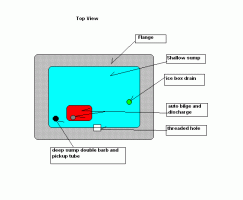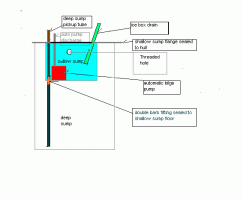Lead shot info
I am just finishing up a centerboard that will have about 60# of lead shot filling pre-formed openings, for weight. If anyone does elect to go that route with filling their keel void, I offer the following observations: Get the void area as clean as you reasonably can, but once the shot/resin mix sets up, it's adhesion to the surrounding surface isn't that important since it will be conforming pretty exactly to the space. Use polyester resin - it is plenty strong enough to glue the shot together and at about a third the cost of epoxy, and will fill the spaces between the shot just as well. Do the job in several pours, so as to keep the temperature under control as it kicks off. If you mix up more resin than you need for one pour, refrigerate the rest, then mix and pour as needed - I found that about 10 lbs of shot at a time made a good mix for my purposes. Put the amount of resin needed for one application into a container, pour in the appropriate amount of shot, stir it up a little, add resin or shot as needed, then go to it. The slurry will pour with about the same consistency as concrete and will go into every opening of any size - you don't have to worry about air pockets.




